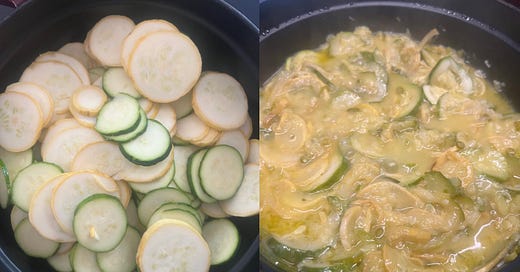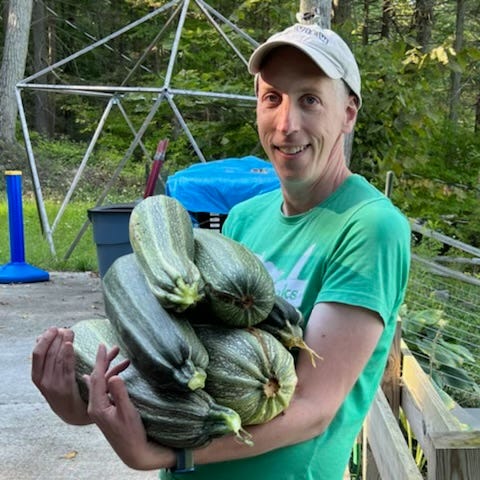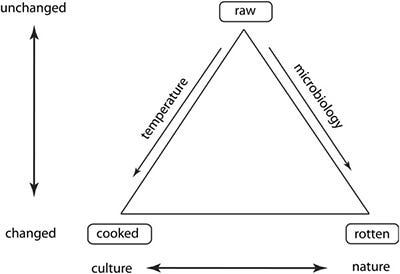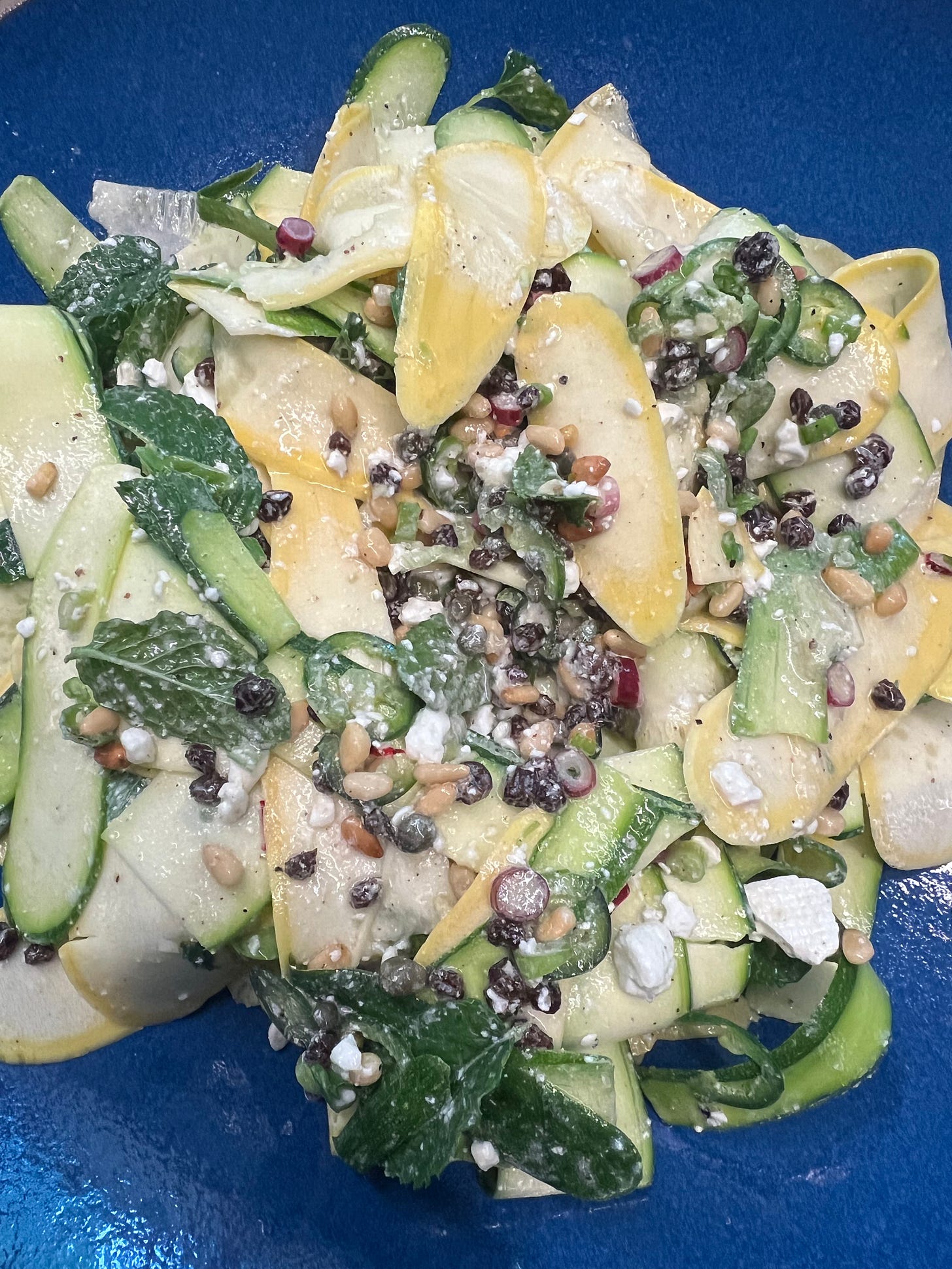Issue #165: Summer Squash, Two Ways
One Raw, One Very Cooked—Two Recipes for Zucchini and/or Yellow Squash
What to do with all that zucchini in the farmers market? In your CSA? Left on your stoop? In your fridge? Zucchini is often maligned as a flaccid, tasteless squash unworthy of center stage—the tofu of summer vegetables. Bah, I say.
Not all zucchini are created equal. My favorite is the Romanesco variety, the light green Italian ones with ridges that have dense, flavorful flesh. Like all zucchini, they are best when on the small side. But others can be good, too. The shiny, dark green ones you find in the grocery store during winter are my least favorite, but they will do. I use yellow summer squash interchangeably and often in combination with green zucchini. And sometimes you just have a giant zucchini (I want to write “zucchino”) or five you don’t know what to do with. As with most ingredients, it’s how you prepare them.
The two recipes I offer you today make for a funny juxtaposition, one raw, one very, very cooked. (I can’t type that without thinking of French anthropologist Claude Levi-Strauss’s Culinary Triangle.) Together they show the versatility of this vegetable, while both being lick-the-plate delicious.
The salad is a recipe from my friend, chef Tony Liu of The Queensboro in New York City. At the time I first tasted this salad, he was chef of Morandi, restaurateur Keith McNally’s foray into Italian food after his Gallic successes at Balthazar and Pastis. Shaving zucchini into long, thin slices on a mandoline gives them a noodle-like quality that I find irresistible. This is different from the stringy noodles that were popularized by low-carb enthusiasts a few years back, which I didn’t appreciate much—these are more pappardelle than spaghetti. Like all of Tony’s food, what makes this salad delicious is the balance of flavors—sweet, spice, salt, acid—and the combination of textures. It’s truly moreish.
RECIPE: Summer Squash Salad
Makes 4 servings
1/4 cup dried currants, raisins, or other dried fruit
1 teaspoon cayenne pepper
1/4 cup raw pine nuts
2 medium green zucchini (about 3/4 pound)
2 medium yellow squash (about 3/4 pound)
1 green Serrano or jalapeño chili, seeds removed, thinly sliced
1/4 cup extra-virgin olive oil
Juice of 1 lemon
1/2 bunch mint or basil leaves
1/4 cup pitted black olives, preferably oil cured, chopped
1/4 cup sliced ricotta salata or crumbled feta
Salt and freshly ground black pepper, to taste
Combine the currants or other dried fruit and cayenne with 1/2 cup of water in a small saucepan. Bring to a boil, turn off the heat, and let steep for 20 to 30 minutes to soften. Drain. Meanwhile toast the pine nuts on a baking sheet in a 300°F. oven until lightly golden and aromatic, 8 to 10 minutes.
Using a mandoline or sharp carrot peeler, slice the zucchini and yellow squash lengthwise into long strips into a large bowl. Stop once you hit the seeds in the center of the vegetable, rotate, and shave some more. Repeat. At the end you should have a long, squared plugs of seeds to discard.
Combine the slices of yellow squash and zucchini with the chili, olive oil, and lemon juice. Add the mint leaves, olives, ricotta salata or feta, toasted pine nuts, and drained currants. Gently toss together, season to taste with salt and pepper, and serve.
It’s Okay to “Overcook” Some of Your Vegetables
The second dish represents my ongoing appreciation of long-cooked vegetables (see greens Issue #161). I first stumbled over this mushy zucchini recipe in a cookbook I was reading while dining alone in one of my favorite restaurants in Stockholm, Babette. It’s such a foodie hangout that they keep favorite cookbooks lying around for solo diners to page through. I picked up a beautiful, white cookbook I’d never seen from a London restaurant I’d never heard of, by a chef whose name intrigued, Skye Gyngell of Spring. So many recipes in the book were appealing to me, I got out my phone to snap photos of page after page.
The recipe that I keep coming back to is this slow-cooked zucchini—of course Gyngell calls them courgettes. “I love this method of cooking courgettes. It is the one I return to time and again—and the recipe I have been asked for more than any other over the years,” she wrote in the headnote. Some magical synergy between a handful of ingredients happens when you cook zucchini this way that transforms it from a delicate summer squash into something more substantial—buttery, herbal, slurpy. I could eat the entire thing myself and I’d be lying if I said I haven’t done so. Gyngell writes the recipe for tarragon, but suggests you can use any soft herb, such as basil, mint, parsley, or chervil. I waffle between tarragon and basil as my favorite accents.
Note, although delicate little squash are ideal, I’ve found this a great use for large, overgrown zucchini, as the long cooking softens the tough skin and allows any excess water to evaporate.
RECIPE: Slow-Cooked Zucchini
Makes 4 servings
4 or 5 medium green zucchini, yellow squash, or a combination (about 2 pounds)
3 tablespoons extra-virgin olive oil
2 tablespoons unsalted butter
Salt and freshly ground black pepper, to taste
Handful tarragon, basil, chervil, mint, or parsley, leaves only, chopped
Trim the ends of the squash and slice crosswise into thin disks, less than ¼ inch thick. (If using larger squash, cut the disks in half or quarters.)
In a wide Dutch oven or casserole with a tight-fitting lid, heat the olive oil and butter over a low burner. Add the sliced squash along with a generous pinch of salt. Cover and cook very slowly for about an hour or more, stirring frequently, until the squash has broken down into mush. I keep adjusting the burner so there’s a gentle but steady simmer. You don’t want the zucchini to stick to the bottom of the pan or to brown at all.
When the slices have virtually disintegrated, remove the lid. The zucchini will have given off a lot of water. Increase the heat a little to encourage some more evaporation to firm up the mixture. Simmer another 5 to 10 minutes or so. Stir in the chosen herb and add a grind or two of black pepper. This dish is delicious served hot, room temperature, and cold.
As a side note, about a year after finding this cookbook in Stockholm back in 2017, I found myself in London having lunch with chef colleagues at Spring. The Covent Garden restaurant was as white and stylish and delicious as the book.








